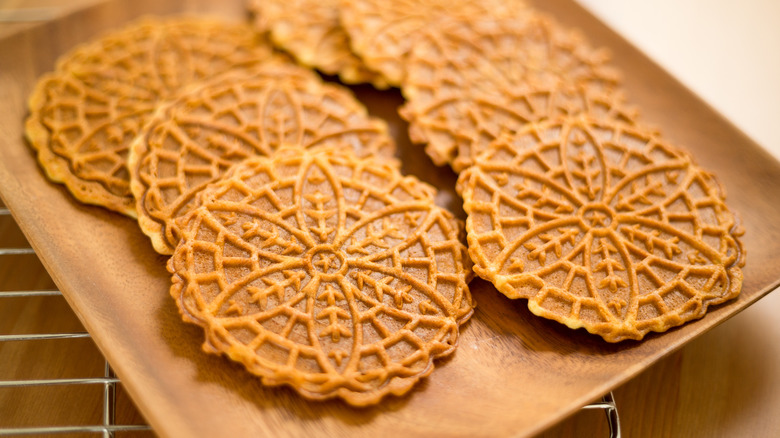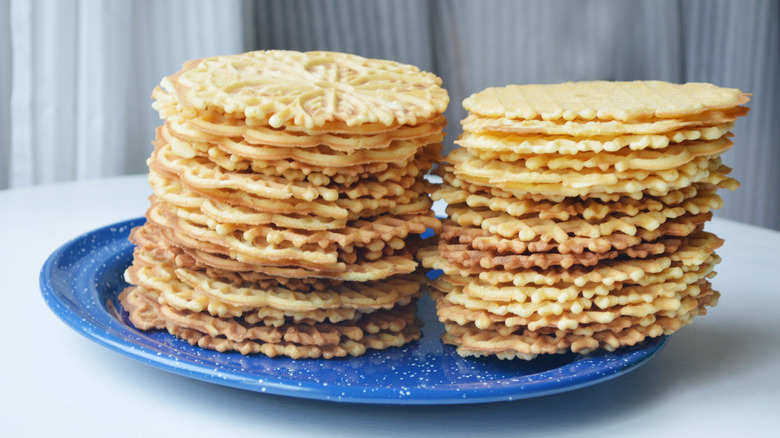The Possible 8th Century Origins Of Pizzelle Cookies
When you treat yourself to an ice cream cone, which style do you choose? If you like to go for a sugar or a waffle cone — two types of grid-patterned, super-crunchy cones that hold up well to hard ice cream (via Webstaurant Store) — then chances are you'd love pizzelle cookies. They are light, crispy Italian waffle cookies that are made by pouring a thin batter onto a two-plated electric iron griddle that's very similar to a waffle iron, according to Grand Voyage Italy. Lacy pizzelle can be enjoyed as cookies or quickly rolled into a cone shape while still warm and used as an ice cream (gelato?) cone, too, according to Saveur, much as waffle cones are made.
When enjoyed in their cookie form, Grand Voyage Italy notes, pizzelle are often dipped into melted chocolate or a thin icing and then adorned with sprinkles. Often decorated with red, green, and white elements in a nod to the Italian flag, those very colors play double duty at Christmastime when the cookies are enjoyed both fresh and packaged across Italy.
This Christmas cookie may date to the 8th century
Traditionally eaten at Christmastime all over Italy, the thin, crispy, design-imprinted pizzelle cookies have been around for a long time — possibly connected to an 8th century Roman treat. The Courier Post writes the Roman predecessor was called crustule or crustulum. The more modern form we know today dates back centuries to the south-central Italian region of Abruzzo.
When first created, pizzelle cookies were cooked between two iron plates attached to long handles rotated over a stove or an open fire (via Unique Dining). By the 20th century, though, the electric pizzelle press that's similar to a waffle iron was invented, making commercial production of the cookies much more efficient. Consumers can even find affordable countertop models for making the treats at home (via Amazon).
Whether you plan to purchase the wafers or make them at home over the holidays, you can enjoy them plain, dusted with powdered sugar, sandwiched around a layer of Nutella or softened ice cream, rolled into a tube and used as a cannoli shell, or, of course, shaped into a cone and piled high with gelato (via Grand Voyage Italy).

